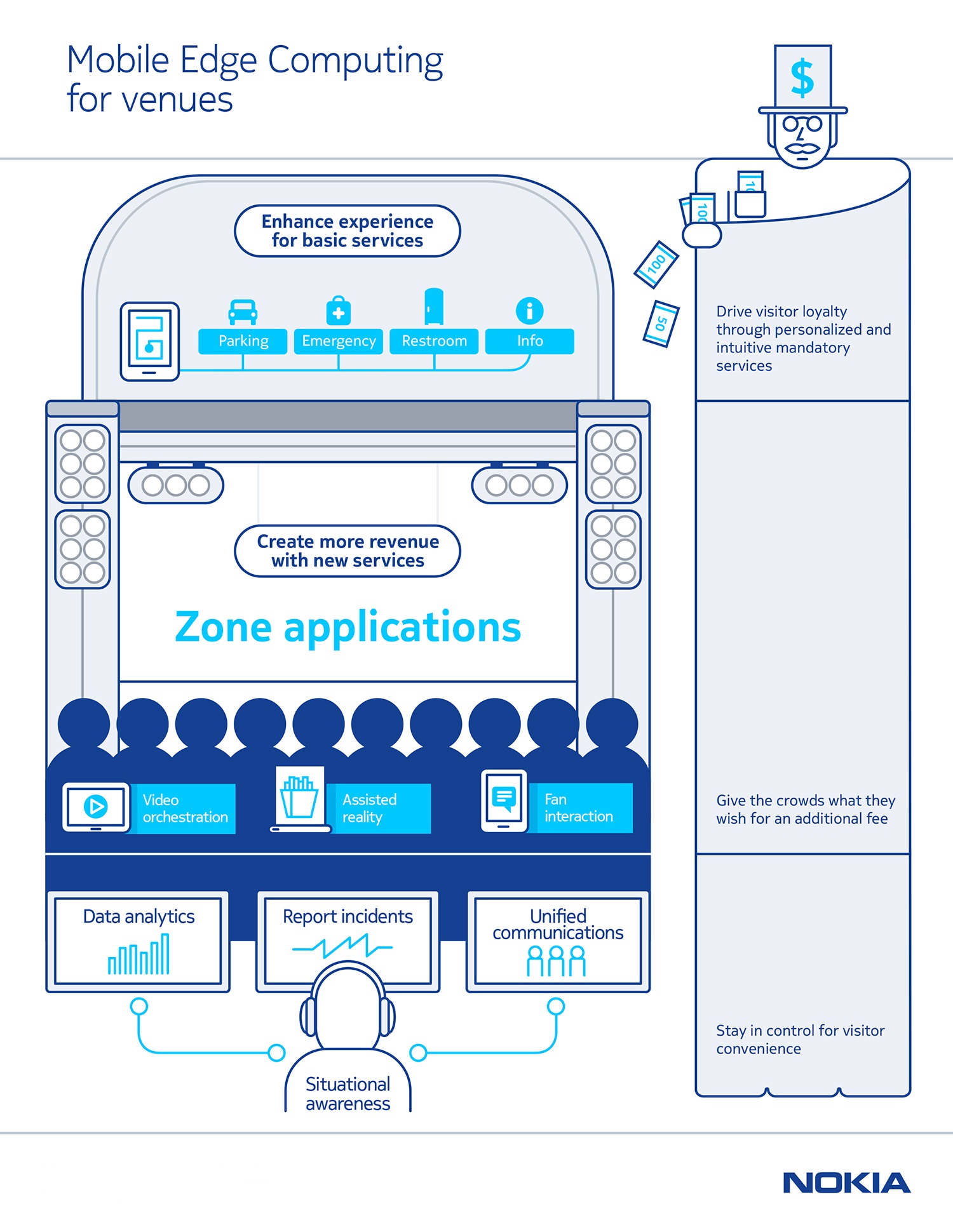According to the company, its MEC platform will “extend the possibilities of the connected world to myriad enterprises” such as warehouses, factories, transportation hubs, campuses and hospitals, connecting personnel and automating workflows.

The Finnish telco has announced three enterprise-specific MEC applications:
- Object tracking to allow the tracking of assets and personnel to centimeter-level accuracy.
- Video surveillance extended from the operations room to mobile devices, allowing security personnel to access any feed at any time, wherever they are.
- Video analytics to analyze data feeds from security cameras, alerting staff to investigate irregular activity immediately.
Furthermore, Nokia will provide an AppFactory environment for the creation of applications to meet the specific needs of enterprises and will support the integration of existing enterprise applications to the MEC environment.
“Mobile Edge Computing (MEC) allows enterprises to take advantage of the latest generation LTE technology, in particular small cells, and real time applications for building complete campus networks. These networks meet the demanding privacy, resilience, and latency requirements set by business-critical applications, extending LTE to new domains,” said Dirk Lindemeier, Head of Mobile Edge Computing and Wi-Fi products, Nokia.
Nokia plans to first provide connectivity to networks using MEC to process data closer to end users, in conjunction with any combination of small cells and macro base stations. The company will initially enable connectivity over existing licensed LTE spectrum, working together with operators to transform portions of their 4G networks into discrete private LTE networks. It will also enable connectivity for Wi-Fi networks via its ‘Wi-Fi Controller as a Service offer’.
The company has also revealed plans to leverage LTE in the unlicensed spectrum using its MulteFire technology that can be deployed by operators, cable companies, ISPs, building owners and enterprises.
